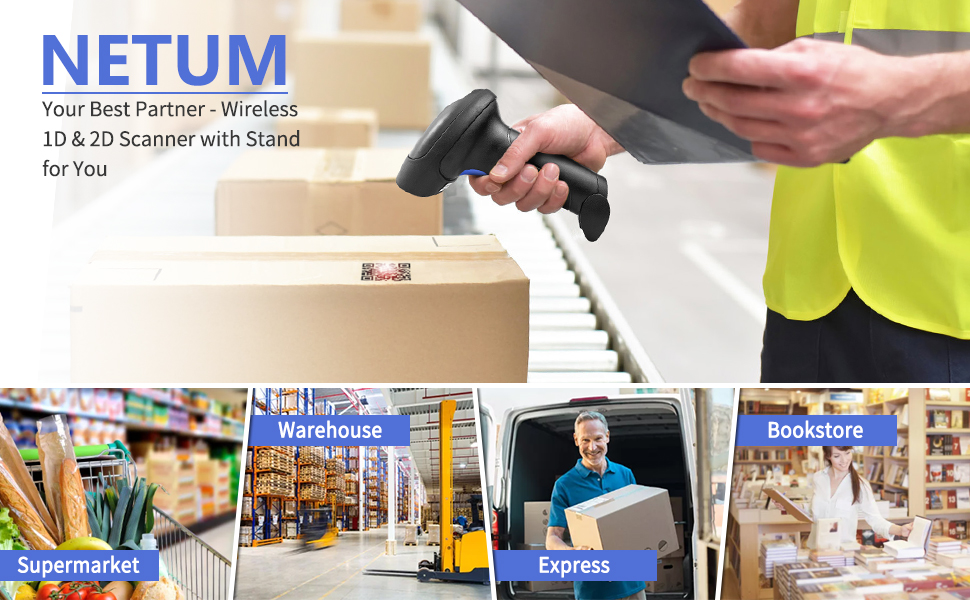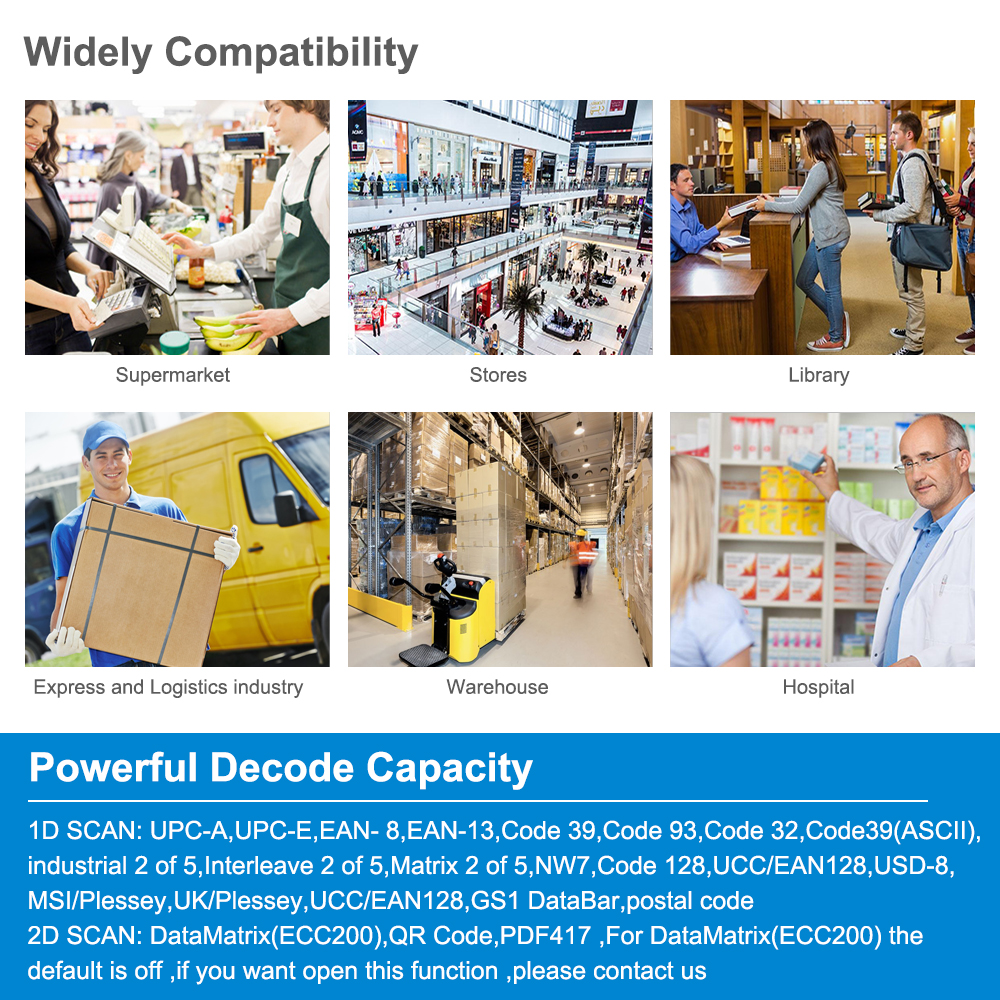In today’s fast-paced business world, retail checkout, logistics tracing, and medical drug verification all depend on a reliable handheld scanner. As a key link between physical goods and digital systems, the right handheld scanner directly impacts operational efficiency and cost control. Among various data collection tools, handheld barcode scanners are the industry mainstream—especially wireless handheld scanners and 2D handheld barcode scanners, which stand out for their wide adaptability to different business scenarios.

First, match the handheld scanner to your business’s barcode type. Retail sectors often use 1D barcodes (like EAN or UPC), so a basic handheld barcode scanner works perfectly here: it’s easy to operate, low-cost, and meets daily scanning needs. But for industries needing to store more data—such as medical facilities recording patient records, manufacturing plants tracing part life cycles, or logistics companies labeling package details—1D barcodes are insufficient. This is where a 2D handheld barcode scanner becomes essential: it can read QR codes, Data Matrix codes, and even extract text or images embedded in barcodes, effectively avoiding information omission. Netum barcode scanners, a trusted option, offer 2D handheld barcode scanner models with advanced image recognition technology, decoding at over 300 times per second. Even when facing blurred, faded, or incomplete barcodes, this Netum barcode scanner performs reliably, fitting the needs of medical, manufacturing, and logistics industries.
Second, tailor the handheld scanner to your usage scenario. For retail cash registers, a lightweight wireless handheld scanner is ideal: it breaks free from cable constraints, allowing cashiers to scan products flexibly—whether on top shelves, bottom racks, or irregularly packaged items. Importantly, a quality wireless handheld scanner should have a battery life of 12+ hours to avoid downtime during peak hours. For logistics and warehousing, a durable handheld barcode scanner is a must: look for one with IP67 protection (to resist dust and short-term water immersion) and the ability to withstand 1.5-meter drops. Netum barcode scanners have a dedicated logistics handheld barcode scanner that meets IP67 standards; its body is made of high-strength ABS material, ensuring stable scanning performance even in dusty, busy warehouse environments. In medical settings, the handheld scanner must be made of antibacterial materials and support alcohol disinfection—this prevents cross-infection when scanning patient wristbands or drug packages.
Third, verify the handheld scanner’s connection method and system compatibility. A wireless handheld scanner typically supports two connection modes: Bluetooth for short-distance, small-data transmission (such as syncing scanning data to a POS machine in retail) and Wi-Fi for long-distance, large-data transmission (like uploading cargo info to a cloud management system in logistics). Many wireless handheld scanners also offer offline storage (up to 100,000 entries) for times when network signals are weak. If the handheld scanner is used on a fixed workbench—such as a quality inspection station in a factory—a wired handheld barcode scanner (with USB or RS232 ports) is more suitable: it ensures stable connections and eliminates worries about battery life. Additionally, confirm the handheld scanner is compatible with your business’s operating system, whether it’s Windows, macOS, Android, or iOS. Netum barcode scanners excel here: they come with built-in multi-system adaptive drivers, so no extra complex software is needed—just connect the Netum barcode scanner to a computer or mobile device, and it’s ready to use.
Finally, balance budget and value when selecting a handheld scanner. Entry-level handheld scanners (mostly basic 1D handheld barcode scanners) are priced relatively low, making them a good fit for small businesses or scenarios with low scanning frequency. Mid-to-high-end models—including advanced wireless handheld scanners and high-performance 2D handheld barcode scanners—offer faster scanning speeds, stronger durability, and richer features. These are ideal for large retail chains, logistics enterprises, or manufacturing factories that require high-frequency, high-reliability scanning. Importantly, mid-to-high-end handheld scanners have a service life of 3–5 years and low maintenance costs, delivering better long-term value. Netum barcode scanners cover all price ranges: its entry-level handheld barcode scanner is affordable and meets basic needs, while its mid-to-high-end wireless handheld scanner and 2D handheld barcode scanner have upgraded battery life, protection levels, and decoding capabilities to match demanding business requirements.
In short, choosing the right handheld scanner means carefully weighing four key factors: barcode type, usage scenario, connection method, and budget. Netum barcode scanners, with their diverse models, reliable performance, and strong compatibility, effectively solve data collection challenges across retail, logistics, medical, and manufacturing industries—ultimately helping businesses boost efficiency and cut unnecessary costs.


